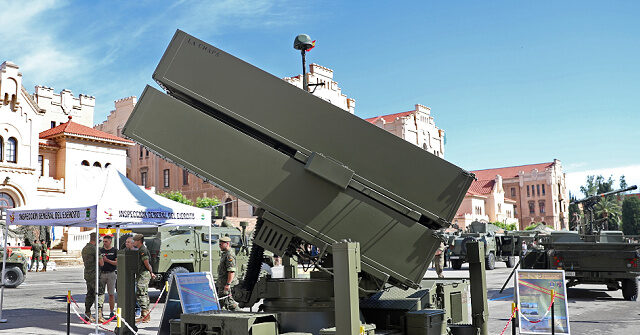In a recent escalation of tensions in East Asia, China has threatened to implement “resolute countermeasures” in response to the United States’ $2 billion arms sale to Taiwan. This significant arms deal includes Taiwan’s first acquisition of the National Advanced Surface-to-Air Missile System (NASAMS), a cutting-edge medium-range air defense system. The introduction of NASAMS is particularly noteworthy, as the system gained prominence after its deployment to Ukraine in late 2022, where it demonstrated remarkable effectiveness alongside the renowned Patriot anti-missile system. The positive outcomes of these systems in Ukraine have prompted the U.S. to expedite arms shipments to assist Ukraine, underscoring the strategic importance of NASAMS in contemporary defense settings.
The robust performance of NASAMS in Ukraine is juxtaposed against the backdrop of Russia’s air defense capabilities, which have come under scrutiny following their inability to effectively counteract UAV and missile attacks. Notably, reported successes include a 100% interception rate by the initial NASAMS units deployed in Ukraine, which effectively neutralized short- and medium-range Russian missiles. Meanwhile, the Patriot system has similarly excelled against hypersonic missile threats, further diminishing the perceived efficacy of Russian air defense innovations. In light of these developments, China’s perception of Taiwan acquiring such advanced air-defense technologies raises alarms, particularly amidst recent incidents where Russian air defenses failed to protect critical targets during Israeli operations.
Following the approval of the arms deal, Beijing reacted strongly, condemning the U.S. for what it deems acts that endanger regional stability. The Chinese Foreign Ministry lodged serious protests against Washington’s actions, asserting that the move threatens China’s national sovereignty and security. In an official statement, the ministry indicated that such acts would compel China to adopt necessary defensive measures to uphold its territorial integrity, mirroring its long-standing position on Taiwan as a core issue. As a counter-narrative, Taiwan’s government asserts that the acquisition of NASAMS is essential for regional stability and highlights its determination to safeguard its homeland amid increasing threats from China.
State media in China responded with accusations that the U.S. intends to financially exploit Taiwan through arms sales while benefiting American defense contractors. The commentary suggested that while NASAMS would contribute to Taiwan’s defense, its overall impact on deterring the expansive capabilities of the People’s Liberation Army (PLA) might be limited. This rhetoric not only reflects China’s opposition to foreign arms sales to Taiwan but also highlights its broader anxiety about the implications of perceived Taiwanese militarization—a narrative central to China’s domestic and foreign policy stance regarding Taiwan.
As Taiwan prepares to transition from its aging Hawk surface-to-air missile system to NASAMS, the dynamics of regional security in East Asia are rapidly evolving. The Hawk system, which was officially retired in June 2023, has also played a role in the ongoing conflict in Ukraine, with U.S. initiatives aimed at donating retired military equipment to bolster Ukraine’s defense against Russian aggression. With Taiwan seeking to enhance its defensive capabilities against an increasingly assertive China, the arms deal symbolizes a significant shift in military readiness and strategic posturing.
Ultimately, the arms deal encapsulates the broader geopolitical rivalries in the region, where U.S.-Chinese tensions have become increasingly pronounced. The implications of the sale extend beyond immediate military considerations; they fundamentally reshape the security architecture in the Asia-Pacific. As the U.S. continues to support Taiwan’s defense capabilities, China will likely respond not only through military posturing but also through its own strategic initiatives that could further escalate the situation. The evolving narratives surrounding the arms deal and associated regional security dynamics will be crucial to watch in the forthcoming months as tensions remain high in this flashpoint.

